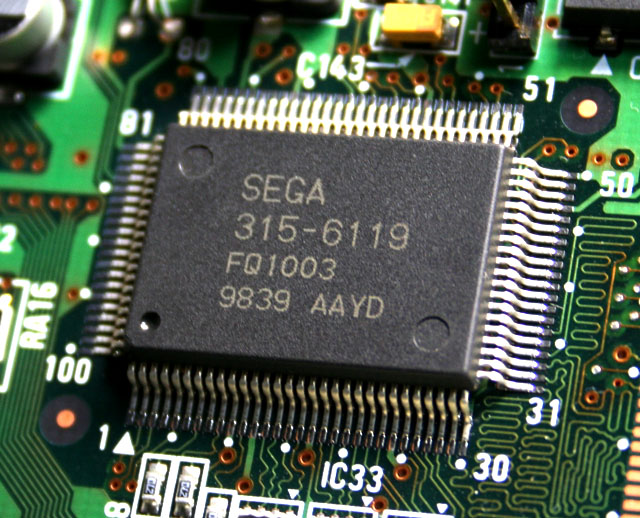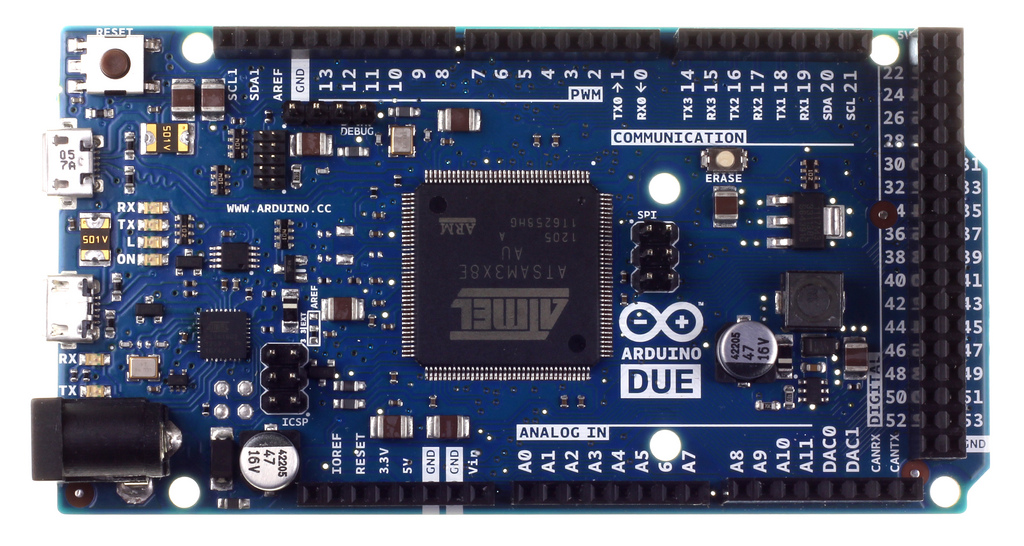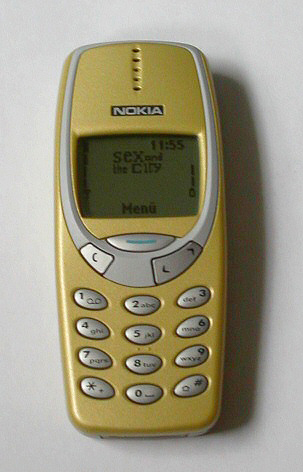|
ARM7
ARM7 is a group of 32-bit RISC ARM processor cores licensed by ARM Holdings for microcontroller use. The ARM7 core family consists of ARM700, ARM710, ARM7DI, ARM710a, ARM720T, ARM740T, ARM710T, ARM7TDMI, ARM7TDMI-S, ARM7EJ-S. The ARM7TDMI and ARM7TDMI-S were the most popular cores of the family. Since ARM7 cores were released from 1993 to 2001, they are no longer recommended for new IC designs; instead ARM Cortex-M or ARM Cortex-R cores are preferred. Overview This generation introduced the Thumb 16-bit instruction set providing improved code density compared to previous designs. The most widely used ARM7 designs implement the ARMv4T architecture, but some implement ARMv3 or ARMv5TEJ. ARM7TDMI has 37 registers (31 GPR and 6 SPR). All these designs use a Von Neumann architecture, thus the few versions containing a cache do not separate data and instruction caches. Some ARM7 cores are obsolete. One historically significant model, the ARM7DI"ARM7DI Data Sheet"; Document ... [...More Info...] [...Related Items...] OR: [Wikipedia] [Google] [Baidu] |
ARM Architecture
ARM (stylised in lowercase as arm, formerly an acronym for Advanced RISC Machines and originally Acorn RISC Machine) is a family of reduced instruction set computer (RISC) instruction set architectures for computer processors, configured for various environments. Arm Ltd. develops the architectures and licenses them to other companies, who design their own products that implement one or more of those architectures, including system on a chip (SoC) and system on module (SOM) designs, that incorporate different components such as memory, interfaces, and radios. It also designs cores that implement these instruction set architectures and licenses these designs to many companies that incorporate those core designs into their own products. There have been several generations of the ARM design. The original ARM1 used a 32-bit internal structure but had a 26-bit address space that limited it to 64 MB of main memory. This limitation was removed in the ARMv3 series, which h ... [...More Info...] [...Related Items...] OR: [Wikipedia] [Google] [Baidu] |
Risc PC
The Risc PC is Acorn Computers's RISC OS/ Acorn RISC Machine computer, launched on 15 April 1994, which superseded the Acorn Archimedes. The Acorn PC card and software allows PC compatible software to be run. Like the Archimedes, the Risc PC continues the practice of having the RISC OS operating system in a ROM module. Risc PC augments the ROM-based core OS with a disk-based directory structure containing configuration information, and some applications which had previously been kept in ROM. At the 1996 BETT Educational Computing & Technology Awards, the machine was awarded Gold in the hardware category. Technical specifications Use The Risc PC was used by music composers and scorewriters to run the Sibelius scorewriting software. Between 1994 and 2008, the Risc PC and A7000+ were used in television for broadcast automation, programmed by the UK company OmniBus Systems: once considered "the world leader in television station automation" and at one point automating " ... [...More Info...] [...Related Items...] OR: [Wikipedia] [Google] [Baidu] |
ARM Cortex-M
The ARM Cortex-M is a group of 32-bit RISC ARM processor cores licensed by Arm Holdings. These cores are optimized for low-cost and energy-efficient integrated circuits, which have been embedded in tens of billions of consumer devices. Though they are most often the main component of microcontroller chips, sometimes they are embedded inside other types of chips too. The Cortex-M family consists of Cortex-M0, Cortex-M0+, Cortex-M1, Cortex-M3, Cortex-M4, Cortex-M7, Cortex-M23, Cortex-M33, Cortex-M35P, Cortex-M55. The Cortex-M4 / M7 / M33 / M35P / M55 cores have an FPU silicon option, and when included in the silicon these cores are sometimes known as "Cortex-Mx with FPU" or "Cortex-MxF", where 'x' is the core variant. Overview The ARM Cortex-M family are ARM microprocessor cores which are designed for use in microcontrollers, ASICs, ASSPs, FPGAs, and SoCs. Cortex-M cores are commonly used as dedicated microcontroller chips, but also are "hidden" inside of SoC chips as pow ... [...More Info...] [...Related Items...] OR: [Wikipedia] [Google] [Baidu] |
AT91SAM7
Atmel ARM-based processors are microcontrollers and microprocessors integrated circuits, by Microchip Technology (previously Atmel), that are based on various 32-bit ARM processor cores, with in-house designed peripherals and tool support. Overview ARM licenses the core design for a series of 32-bit processors. ARM does not manufacture any complete silicon products, just intellectual property (IP). The ARM processors are RISC (reduced instruction set computing). This is similar to Microchip’s AVR 8-bit products, a later adoption of RISC architecture. Whereas the AVR architecture used Harvard architecture exclusively, some ARM cores are Harvard (Cortex-M3) and others are Von Neumann architecture (ARM7TDMI). Semiconductor companies such as Microchip take the ARM cores, which use a consistent set of instructions and register naming, and add peripheral circuits such as ADCs (analog to digital converters), clock management, and serial communications such as USART, SPI, I2C, CAN, LI ... [...More Info...] [...Related Items...] OR: [Wikipedia] [Google] [Baidu] |
Nokia 3310
The Nokia 3310 is a GSM mobile phone announced on 1 September 2000, and released in the fourth quarter of the year, replacing the popular Nokia 3210. It sold very well, being one of the most successful phones, with 126 million units sold worldwide, and being one of Nokia's most iconic devices. The phone is still widely acclaimed and has gained a cult status due to its reputation for durability. Several variants of the 3310 have been released, including the Nokia 3315, 3320, 3330, 3350, 3360, 3390 and 3395. The Nokia 3310 was produced at factories in Finland and Hungary. The 3315s were produced in South Korea for the Asia-Pacific market. A new mobile phone based on the 3310 design was launched in 2017. The new Nokia 3310 model comes with a comprehensive update over its predecessor, with a 2.4" color display, a 2 Megapixel rear camera and a microSD slot. Design The 3310 was developed at the Copenhagen Nokia site in Denmark and unveiled at the "Don't be bored. Be totally b ... [...More Info...] [...Related Items...] OR: [Wikipedia] [Google] [Baidu] |
Nokia 3210
The Nokia 3210 is a GSM cellular phone, announced by Nokia on 18 March 1999. Design The 3210 was designed by Alastair Curtis in Nokia's Los Angeles Design Center. The development was led by Frank Nuovo, who had designed the sleek and curvy Nokia 8110 in 1996. The team wanted to create an "expressive" and personalisable handset beyond the usual business-oriented mobile phone market, inspired by the Casio G-Shock and Sony Walkman designs. The phone thus became highly influential. Notable features The Nokia 3210 has a total weight of 151 g. The handset measures 123.8 × 50.5 × 22.5 mm and features customisable fascias which clip on. It was thinner than previous Nokia models. It was the first mass market phone with an internal antenna, after the feature had been introduced by Nokia on the luxury phone Nokia 8810 in 1998. Reception, although poorer than that of its predecessor, the 3110, was still very good. Three games came preinstalled: Snake, Memory (pairs- ... [...More Info...] [...Related Items...] OR: [Wikipedia] [Google] [Baidu] |
System On A Chip
A system on a chip or system-on-chip (SoC ; pl. ''SoCs'' ) is an integrated circuit that integrates most or all components of a computer or other electronic system. These components almost always include a central processing unit (CPU), memory interfaces, on-chip input/output devices, input/output interfaces, and secondary storage interfaces, often alongside other components such as radio modems and a graphics processing unit (GPU) – all on a single substrate or microchip. It may contain digital, analog, mixed-signal, and often radio frequency signal processing functions (otherwise it is considered only an application processor). Higher-performance SoCs are often paired with dedicated and physically separate memory and secondary storage (such as LPDDR and eUFS or eMMC, respectively) chips, that may be layered on top of the SoC in what's known as a package on package (PoP) configuration, or be placed close to the SoC. Additionally, SoCs may use separate wireless m ... [...More Info...] [...Related Items...] OR: [Wikipedia] [Google] [Baidu] |
Million Instructions Per Second
Instructions per second (IPS) is a measure of a computer's processor speed. For complex instruction set computers (CISCs), different instructions take different amounts of time, so the value measured depends on the instruction mix; even for comparing processors in the same family the IPS measurement can be problematic. Many reported IPS values have represented "peak" execution rates on artificial instruction sequences with few branches and no cache contention, whereas realistic workloads typically lead to significantly lower IPS values. Memory hierarchy also greatly affects processor performance, an issue barely considered in IPS calculations. Because of these problems, synthetic benchmarks such as Dhrystone are now generally used to estimate computer performance in commonly used applications, and raw IPS has fallen into disuse. The term is commonly used in association with a metric prefix (k, M, G, T, P, or E) to form kilo instructions per second (kIPS), million instructi ... [...More Info...] [...Related Items...] OR: [Wikipedia] [Google] [Baidu] |
JTAG
JTAG (named after the Joint Test Action Group which codified it) is an industry standard for verifying designs and testing printed circuit boards after manufacture. JTAG implements standards for on-chip instrumentation in electronic design automation (EDA) as a complementary tool to digital simulation. It specifies the use of a dedicated debug port implementing a serial communications interface for low-overhead access without requiring direct external access to the system address and data buses. The interface connects to an on-chip Test Access Port (TAP) that implements a stateful protocol to access a set of test registers that present chip logic levels and device capabilities of various parts. The Joint Test Action Group formed in 1985 to develop a method of verifying designs and testing printed circuit boards after manufacture. In 1990 the Institute of Electrical and Electronics Engineers codified the results of the effort in IEEE Standard 1149.1-1990, entitled ''Standard ... [...More Info...] [...Related Items...] OR: [Wikipedia] [Google] [Baidu] |
Nokia 6110
The Nokia 6110 was a GSM mobile phone from Nokia announced on 18 December 1997 and released in 1998. It is not to be confused with the newer Nokia 6110 Navigator. It was a hugely popular follower of the Nokia 2110, and the first of the many Nokia 6xxx series business-targeted phones. Main improvements over the 2110 were reduced size and improved talk time. It was the first GSM phone to use an ARM processor, as well as the first running on Nokia's Series 20 user interface. The phone shared the same platform as the Nokia 5110 targeted at the consumer market; unlike the 5110, however, it had the advanced user interface with menu icons (it was the first phone with this new interface that would become the future standard), and featured an infra-red port (once again being Nokia's first phone with it). It was also the first phone from Nokia to have the popular Snake game pre-installed. It was succeeded/complemented by the similar but enhanced 6150. Variants Nokia 6190 is a ver ... [...More Info...] [...Related Items...] OR: [Wikipedia] [Google] [Baidu] |
NAOMI Yamaha AICA Super Intelligent Sound Processor
Naomi or Naomie may refer to: People and biblical figures * Naomi (given name), a female given name and a list of people with the name * Naomi (biblical figure), Ruth's mother-in-law in the Old Testament Book of Ruth * Naomi (Romanian singer) (born 1977), a.k.a. Naomy * Naomi (wrestler) (born 1987), professional wrestler * Terra Naomi, American indie folk singer-songwriter Arts and entertainment Fictional entities * Naomi, a character in the 2009 American fantasy comedy movie '' 17 Again'' * Naomi Bohannon, a character in the TV series ''Hell on Wheels'' * Naomi, Florida, a fictional town in the Kate DiCamillo novel ''Because of Winn-Dixie'' * Naomi Turner, a character in the American animated television series ''Elena of Avalor'' Music * Naomi Awards, a former British music award * ''Naomi'' (album), by American band The Cave Singers * "Naomi" (song), by Neutral Milk Hotel Other uses in arts and entertainment * ''Naomi'' (novel), a 1924 novel by Jun'ichirō Tanizaki * ''Na ... [...More Info...] [...Related Items...] OR: [Wikipedia] [Google] [Baidu] |
Analog Devices
Analog Devices, Inc. (ADI), also known simply as Analog, is an American multinational semiconductor company specializing in data conversion, signal processing and power management technology, headquartered in Wilmington, Massachusetts. The company manufactures analog, mixed-signal and digital signal processing (DSP) integrated circuits (ICs) used in electronic equipment. These technologies are used to convert, condition and process real-world phenomena, such as light, sound, temperature, motion, and pressure into electrical signals. Analog Devices has approximately 100,000 customers in the following industries: communications, computer, instrumentation, military/aerospace, automotive, and consumer electronics applications.Bloomberg.ADI: Analog Devices Inc Summary" Retrieved January 30, 2011. History The company was founded by two MIT graduates, Ray Stata and Matthew Lorber in 1965. The same year, the company released its first product, the model 101 op amp,Richard Wilson ... [...More Info...] [...Related Items...] OR: [Wikipedia] [Google] [Baidu] |







